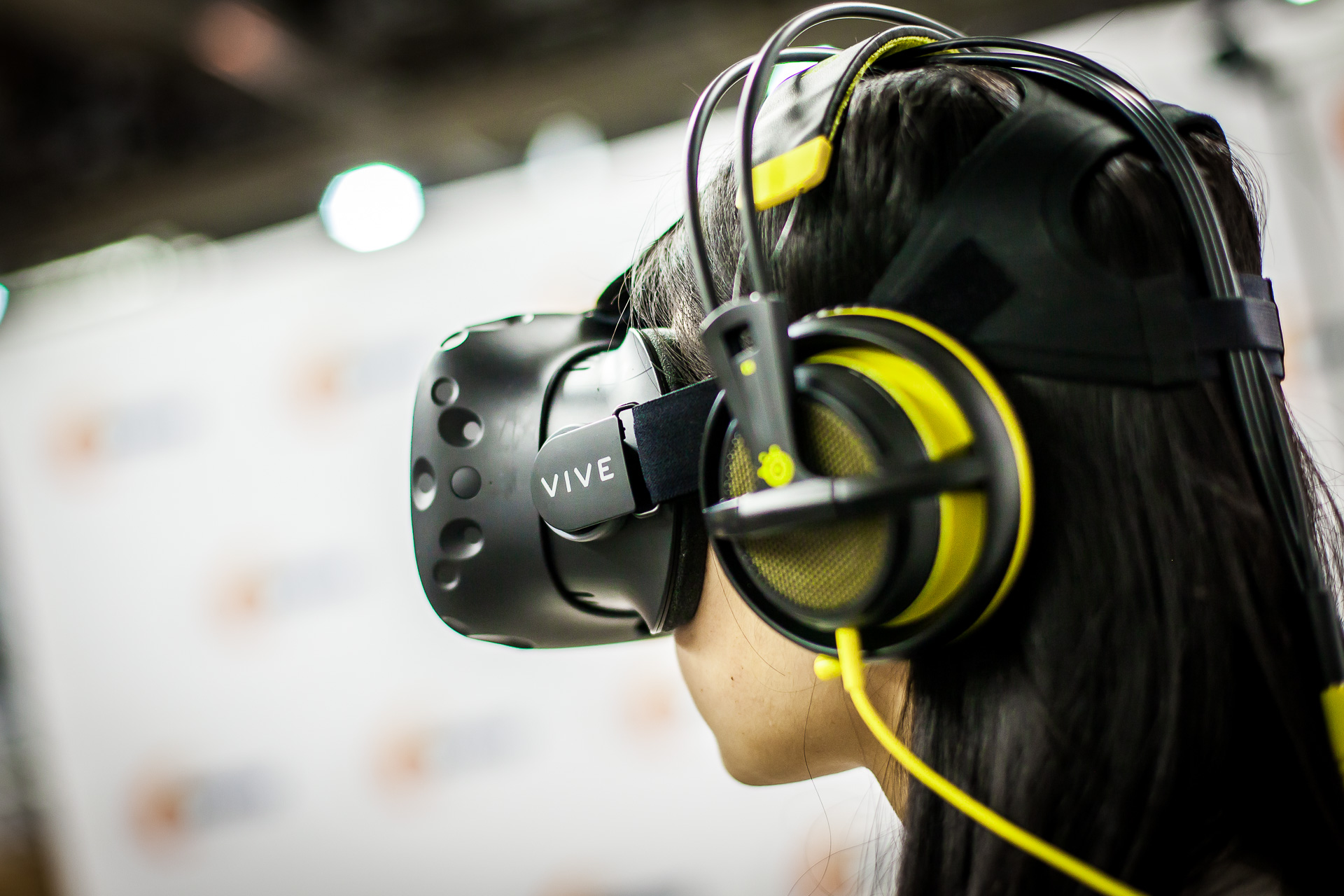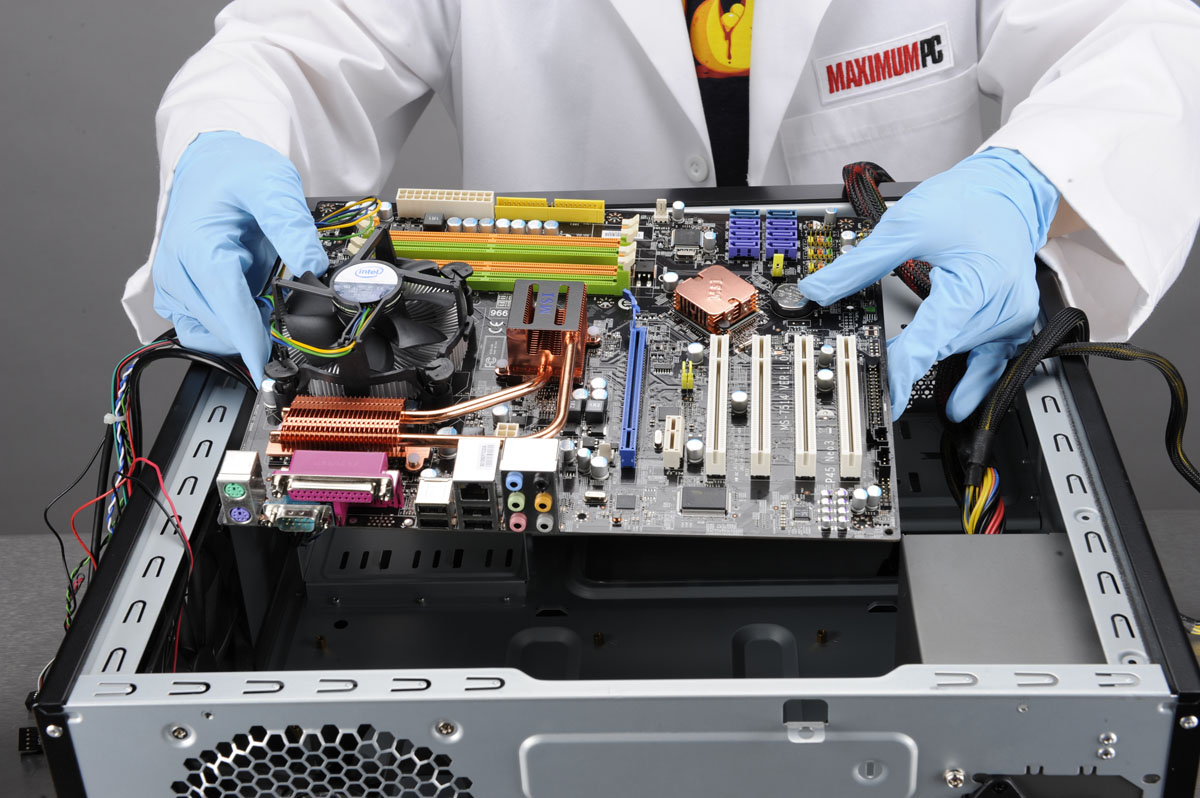It’s the future. Virtual reality is finally, thankfully, here. Both the Oculus Rift and the HTC Vive have launched, and each has (so far) delivered on their promises to create immersive, amazing experiences. But you wouldn’t know anything about that, because you, like most people today, don’t have a PC beefy enough to support VR technology.
Well, never fear. GameSkinny is here to help teach you how to build a VR ready PC on a budget, even if you’ve never built your own desktop before. Believe it or not, it’s pretty simple.
Get familiar with the process
Before diving in and investing in components, it is helpful to scan over a few general PC-building videos and articles to get comfortable with the process if you have never done this before.
This video by Easypcbuilder is very helpful, as is this article by PCWorld. It’s important to remember that the process of building a virtual reality-ready PC is identical to the process of building any other PC, you’ll just be working with more powerful (and expensive) components.
Of course, you aren’t putting this into action just yet, but it’s nice to see firsthand that putting together a computer really isn’t that hard. It’s pretty much just Lego for adults.
Budget
We said a VR PC could be cheap. Well, that’s only half true. Yes, you don’t need to spend $1000 to build a PC fit to play virtual reality games, but you will be spending a not-insignificant-amount of money to put together a computer with the necessary horsepower. It’s important to remember that playing a game in VR requires your computer to render the game twice, at relatively high graphical settings. It’s a tough task.
Most entry-level VR builds cost between 700 and 900 dollars (not including the VR hardware itself) depending on whether or not certain components are on sale. This may not sound key, but it is. Building a computer is always a relatively expensive project, but money can be saved by shopping around. Amazon and Newegg both have regular sales on PC components, so make sure you’re getting the lowest price by looking around. We also recommend using a browser extension like Honey to ensure that you get the full benefit of any active promo codes or discounts.
Once that’s done, it’s time to be realistic. What can you afford? What can’t you afford? Set down a realistic budget for your build at the beginning, and it will make building your virtual reality-ready PC a lot easier in the long run. Just know that you’ll probably go over budget in the end.
Know What You Need
If you’ve built a PC before, you’ve likely heard of Logical Increments. If you haven’t, allow us to introduce you. The site features example builds for everything from budget PCs to monstrous rigs that cost thousands of dollars, and they check each build to make sure that all the components are compatible with each other, which can save first-time PC builders from costly mistakes. It is a near-essential resource for people wondering how to build a PC, and they even have a buying guide for folks wanting to know how to build a VR-ready PC.
Having said that, before you go adding everything Logical Increments lists on their site into your shopping cart, there are a few things you need to keep in mind.
Buy a static wristband
We’ll say it again: buy a static wristband. We’ll be dealing with expensive components, and a single static discharge can irreparably ruin them. If your floor is carpeted, or if there is any fabric around you as you are building the PC, there’s a pretty high risk that static will build up. We don’t want that charge to find the computer.
Personally, when I built my PC, I used this band, made by Belkin. It was cheap, and if nothing else, it gave me piece of mind. All you have to do is clip the clamp to something metal– usually the case of the computer, and it will dispel any static charge that might build up on your body.
Do not skimp on your CPU
There are certainly areas of any VR-ready PC build in which you can skimp a bit. The CPU is not one of them. You’re going to need something with at least a quad-core processor here to keep up with these games, so resign yourself to spending a bit more money. If you are going with a motherboard and build that supports Intel chips, the new Intel i5-6500 isn’t super expensive, and is widely recommended. If you’re planning an AMD build, anything at or above the level of the FX-6350 processor should work, but we’d recommend spending a bit more to get an 8-core processor like the FX-9370 to future-proof the build somewhat.
Do not skimp on your video card either
Like the CPU, your video card is an integral part of this build, since, as we have said above, it’ll pretty much have to render a game twice in order to display it in VR. You’ll be spending a bit of money here as well, so be prepared. For a budget build, the RX 480 will handle most VR apps and games at an attractive price point, but we’d also recommend you consider the R9 390x, which is able to run most VR games at high or very high settings while maintaining a constant frame rate.
Other necessities
For any VR build, you’ll need 8GB RAM at the very least, so a motherboard that can accommodate that is necessary as well. You’ll also need to make sure that your motherboard has plentiful USB ports (2.0, 3.0, and 3.1) so that you can plug your headset in.
Areas to save money
There are a lot of necessities for a VR build, but there are definitely places where you can save some cash here and there. Storage is a biggie, as a solid-state drive is not absolutely necessary for this build, although the added reliability and piece of mind might make springing for one worth it. In addition, if you’re focusing mostly on VR, a nice monitor isn’t really that necessary either.
Plan for the headset you want
You might think that this VR build will be compatible with all the headsets currently on the market, and to be honest, you’d probably be more or less right, but there are definitely a few differences between them that you’ll need to be aware of. You can find the full breakdown here, but in general, you should know that if you plan to buy the Oculus Rift, you’ll need more open USB ports than you will if you’re planning on buying the Vive, while prospective Vive buyers will likely need to ensure that they have the required space to set up the sensors wherever they choose to put their computer.
Ensure that all your parts are compatible
If you do choose to go a bit off-script with your VR build, be sure to visit PCPartPicker. This is another invaluable resource for both novice and experienced PC builders, as it allows you not only to keep track of the components you have picked for your PC, but also to ensure that each component is compatible with every other one. There’s nothing worse than starting a build only to realize that your components don’t fit.
Once you have all of your parts picked out, add each to PC Part Picker to ensure compatibility. Screenshot the page, and file it away for the next step.
Buy smart
Yup. I know you were dreading this step, but depending on how patient you are, you can save hundreds of dollars. Striking at the right moment is key for people looking to truly build a VR rig on the cheap. If you can, try to spread out the time at which you buy your components, waiting for deep sales and discounts across sites instead of buying everything all at once.
This truly can make a huge difference. You’ll be buying many components — cases, cables, hard drives, enclosures, etc. — and saving 10 to 20 dollars on each really adds up in the end. So be patient and you might even end up under budget!
Before you build…
At this point, you’re almost done. Believe it or not, the hard part is over and soon you’ll be part of the VR community. There are just a few things to keep in mind before you actually start piecing these components together.
First, watch that video up there one more time, and read through any how-to-guides in preparation. Building a computer isn’t really that hard, but mistakes can be costly.
The first thing you should do is put on that goofy looking static bracelet and clamp it to something metal to ground yourself. Then, clear out a space to assemble your computer. Again, to avoid static, you really shouldn’t be working on carpet– hardwood is best. Then, just follow the directions in your favorite PC building guide, and you should be all set to experience the wild world of virtual reality.
Well, that is, assuming you still have some money left to buy the headset!
Do you have any suggestions for building a virtual reality-ready PC? Let us know in the comments!









Published: Jul 21, 2016 11:05 am